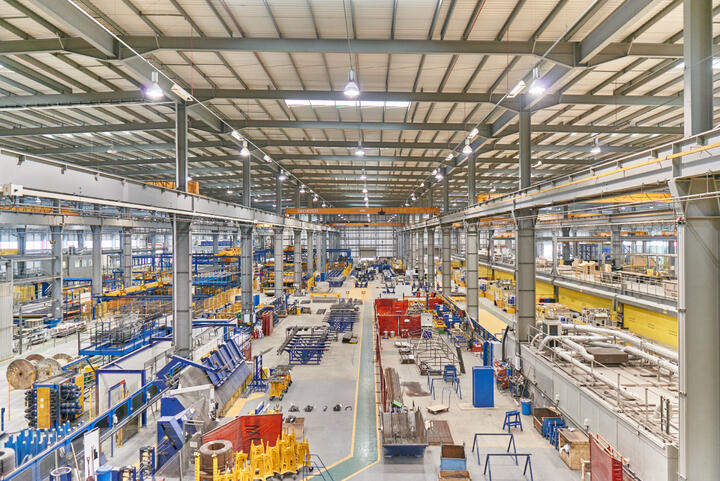Low carbon concrete switch to accelerate net zero push
18 April 2023International construction company Laing O’Rourke will slash its carbon emissions from concrete by an estimated 28 per cent when it switches to a low-carbon option on all new UK projects, following a collaborative research programme that involved digital simulation expertise by the University of Sheffield Advanced Manufacturing Research Centre (AMRC).
Laing O’Rourke’s exclusive use of low-carbon concrete, which took effect from April this year, is set to help accelerate progress towards its net zero target in reducing carbon emissions and aid clients in meeting their sustainability goals.
As part of a long-term research programme co-funded by Laing O’Rourke and Innovate UK, in collaboration with the AMRC and University of Cambridge, the business proved that a range of low carbon concrete options can be successfully deployed on projects as a like-for-like substitute for traditional concrete.
The overall carbon reduction will be 28 per cent when compared with the company’s concrete usage in 2022. This equates to a saving of 14.4 million kgCO2e, which is the same as planting 120,000 trees or 94 hectares of forest.
Cathal O’Rourke, Laing O’Rourke’s newly appointed chief operating officer, said it is committed to being a net zero company before 2050, adding: “We are looking at every possible measure to accelerate our progress. In construction, the greatest challenge is reducing scope 3 emissions – the embodied carbon in purchased materials.
“Reducing all carbon emissions is a priority for our business. The built environment makes a significant contribution to global warming and constructors must work with clients and design partners to deploy new technologies and innovations that make modern methods the norm and enable us to build in less carbon intensive ways.”
As part of the AMRC’s work, Cansu Kandemir, technical fellow for manufacturing intelligence, explained how the team developed a Discrete Event Simulation (DES) model of the Laing O’Rourke Centre for Excellence for Modern Construction (CEMC) facility in Nottinghamshire, allowing the company to simulate their process flows and conduct what-if analysis in the virtual world without affecting real-life production lines.
“This model helped Laing O’Rourke to optimise the deployment strategy of low carbon concrete products without physically disrupting the production process,” she said. “The study provided valuable insights into how the company can make sustainable changes, while maintaining productivity levels.”
The government also welcomed the move, and construction minister, Nusrat Ghani, said that reducing carbon emissions from concrete is essential to achieving net zero carbon by 2050.
He added: “I'm pleased to see the leadership Laing O’Rourke is showing, through innovating and adopting the use of low-carbon concrete on all the construction projects it delivers”.
Rossella Nicolin, Laing O’Rourke’s head of sustainability for Europe, said the expertise of the specialist businesses that make up the company’s internal supply chain had helped introduce the policy so rapidly across all new projects.
“The expertise of our in-house concrete technologists, the experts who operate our advanced manufacturing facility in Nottinghamshire and our supply chain partners, have all contributed to this significant step forward,” said Nicolin.
“Last year, 43 per cent of the concrete products we manufactured for our live projects were low carbon. It’s exciting to think this will rise to 100 per cent this year, and that very soon all our new projects will only use low carbon concrete. I want to thank the team whose hard work has made it possible.”
Laing O’Rourke’s low carbon concrete uses lower carbon alternatives to Portland cement. These include ground granulated blast-furnace slag (GGBS) and pulverised fly ash (PFA), both of which are industrial by-products with a much lower carbon footprint.
The company recognises that this is the first step in a longer journey to decarbonisation. Its ongoing research programme focuses on wider scale deployment of cement-free options, which are ultra-low carbon, and it expects to introduce more of these materials going forward.
In addition, the business became a founding member of ConcreteZero in 2022 and is already decarbonising beyond the programme’s near-term objectives.

